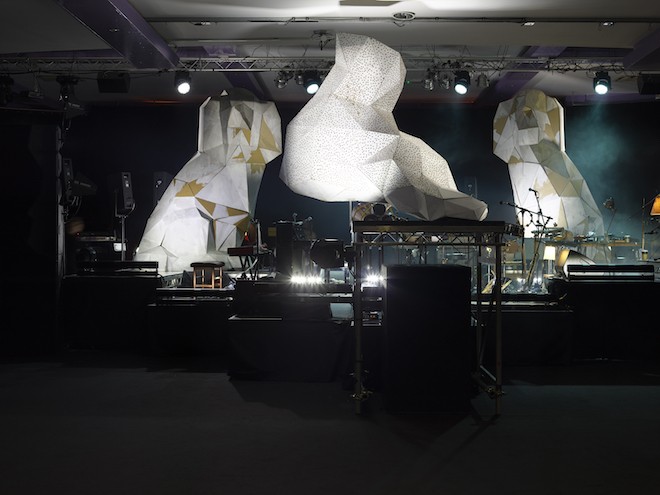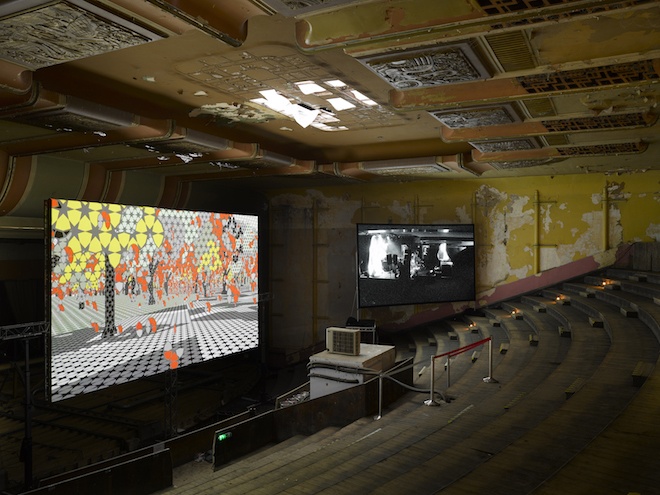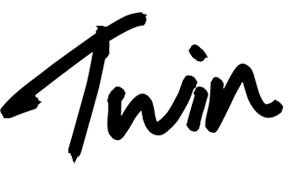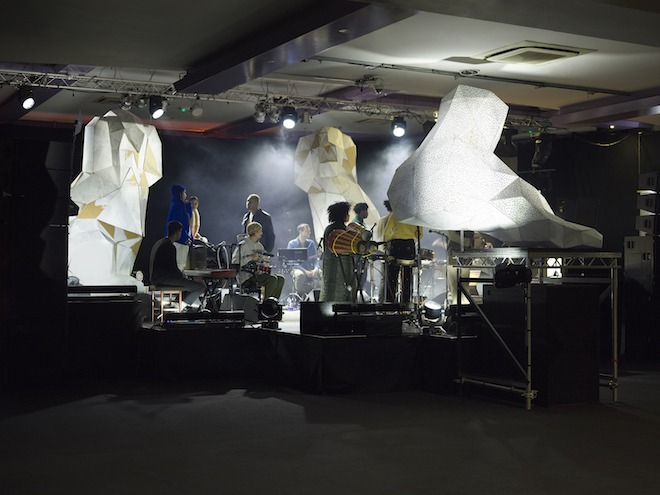What happens when you mix sound and image? This layers of contrasts and collaboration has led to one of the most interesting projects of the year, between British artist Toby Ziegler, XL’s Richard Russell and Sampha. Toby took time to talk to Twin about the project:
How did the decision to work together happen?
I’ve known Richard for about 15 years. We’ve had a 15 year long discussion about music. We’ve also been talking about collaborating for ages but this is the first time it made sense. About two years ago he played me early recordings of some songs off the album, and immediately the title track clicked with this work I’ve been doing, using search engines, so I offered to make a video for that song. The installation grew out of that video.
How did you respond to the music?
Initially I set out to make a fairly conceptual video that only intersected with the song in places, using a similar image search to make a kind of visual Chinese whispers. I was aware of Sampha and Richard’s narratives behind the song, but I was trying to make a tangential video about the way images get juxtaposed online, poignant ones and banal ones. I wanted to reflect the dispassionate nature of the algorithm that drives an image search: sometimes cancer cells are visually equivalent to instagrams of pizza, and termite mounds segue with mushroom clouds. Image searches can function like cut-up techniques or tarot, highlighting our predisposition to find meaning or poetry in seemingly random juxtapositions, and sometimes looking for images online feels like consulting the oracle. In this case subconscious decisions and fate intervened in extraordinary ways to make the video far more autobiographical, and closer to the narrative of the song, than I had originally intended.

Everything is Recorded installation at Hackney Arts Centre
With this album Richard was considering his experience of temporary paralysis from Guillan-Barre syndrome, and Sampha related the song to the experience of sitting in hospital with his dying mother. During the month I was finishing the video my mother had an accident, spent two weeks in a coma and then died. So many people visited her during the course of those 2 weeks, it was a real vigil, but frequently the highly emotional atmosphere was punctured by the banal. Discussions of consciousness and mortality, jostled with lengthy conversations about sandwiches.The video took on all sort of resonances I hadn’t previously considered and I allowed myself a different sort of freedom in the final editing. So the video took this sequence of image searches as the starting point, compressing over 3000 found images and videos, but I then incorporated some photos and videos I’d shot myself.I’ve found images operate at different speeds, and editing the video was analogous to playing a musical instrument. I played the drums for 20 years and then quit in my late twenties, but for this video I made a sequence of images and ‘played’ them.
Then I decided to make a second video for a song featuring Infinite Coles called 8am. It triggered a very specific memory for me, from an acid trip when I was 16. I made a lot of work that stemmed from that one evening in a way, and it started me off using CGI in my paintings. I have this archive of 3D landscapes and objects that I used for paintings and sculptures about 10 or 15 years ago, and for this video I turned them into an animation, a sort of drive-through of this tunnelling geometric space.
Tell me about the installation you created to debut the films and how it functioned?
The song Everything Is Recorded was also central to my design for the installation at the abandoned cinema in Dalston. I wanted to project the video in an old disused cinema for the association with projected analogue images, and also as a space that clearly bore the scars of it’s history. For the installation I wanted to show the two videos I’d made on a cinema screen, flanked by two other screens with projections from webcams in real time. I wanted something that operated at a different frequency to the slightly epileptic ‘image search video’ and the CGI of the 8am video (originally I was going to use a live feed of motorway traffic cameras on the other two screens) When we found a space that could house both the projections upstairs, and the gig downstairs it seemed perfect, and immediately it was clear that the live feed should be to cctv of the stage and rehearsals downstairs. It was very interesting to have these different projections running simultaneously. When you walked into this delapidated, cavernous cinema you could hear the band rehearsing in the space directly beneath you, rumbling through the floor, and see a live link to two cctv cameras trained on the stage. It was an uncanny experience, and often took people a few minutes to compute how the sound and images fitted together. If you put on the headphones you could hear the soundtrack to the videos I made, which were projected on a larger central screen. There were two parallel audio spaces to go with the two visual ones.
What works did you show as part of the performance rehearsal area? What did you like about that context?
When I was 17 I went to Lagos and saw Fela Kuti play in his club, Shrine. It was this huge corrugated iron shed with black and white photographs lining the walls, really rickety podiums dotted around for his dancers, and a huge stage that didn’t really separate the audience from the band. Initially about ten musicians came on and started playing , and then periodically a few more people would wander on stage, have a drink and a chat, and then join in, until eventually there were about 50 people on stage. Fela came on after about four hours of this. That was partly the inspiration for the stage downstairs.
I put a low stage in the middle of the room so the audience could get close and it felt intimate, but it was a place the whole band could hang out. The space downstairs is usually a venue for weddings and is white with a tiled floor and a lot of purple furniture, but I wanted attention to be focussed on the performers and a few objects I introduced, so I put a black floor down and black drapes all around, like a Samuel Beckett production. The stage was approximately triangular with some higher and some lower platforms, and three of my my older sculptures functioning a bit like totems or sentinels at the points. The sculptures also appear in the 8am video as virtual models in a CGI landscape. On the walls there were huge posters of Robert Johnson and Ralf and Florian from Kraftwerk, who were the household gods for the whole project.

Everything is Recorded installation at Hackney Arts Centre
What interested you about the contrast and relationship between music and your work?
I used to play in bands when I was a teenager and in my twenties, but it reached a point where I was dividing my time between visual art and music, and not doing anything justice. I got sick of being the unreliable drummer so I completely quit playing. I loved what playing the drums does to your brain, and I think I can occasionally reach a similar state making visual things. I definitely think music informs my paintings and sculptures in a lateral way. I think images and objects function at different frequencies or speeds, and since I’ve started making video work that aspect has become more explicit.
The title track is very much a criticism of our relationship to the digital. How does this connnect to your own take on the internet, technology and our access to imagery?
I’m not sure if that’s what Richard and Sampha intended, but for me it’s exciting how quickly things are changing and sinister how trusting we are. My diabetic son has a sensor under his skin that talks to my phone, to monitor his blood sugar, and in a way the internet also functions as a prosthesis. The internet is a repository for many of our memories, and Google could be seen as our collective unconscious. When you do a similar image search for a picture that doesn’t exist online, the algorithm analyses the image and creates a set of visual parameters by which to find similar ones: colour, tone, composition, and to some extent subject, and shows you the most popular images within those parameters. The results change from day to day depending on what people are looking at. I found that one brownish, abstract image which reliably fed back images of fried dumplings suddenly started to prompt pictures of arid landscapes, because of a drought in California. The results also change because of the constant modification of the algorithm , and it’s scary to think how much influence the designers of these algorithms have.



 Twitter
Twitter
 Tumblr
Tumblr
 YouTube
YouTube
 Facebook
Facebook
 Instagram
Instagram
